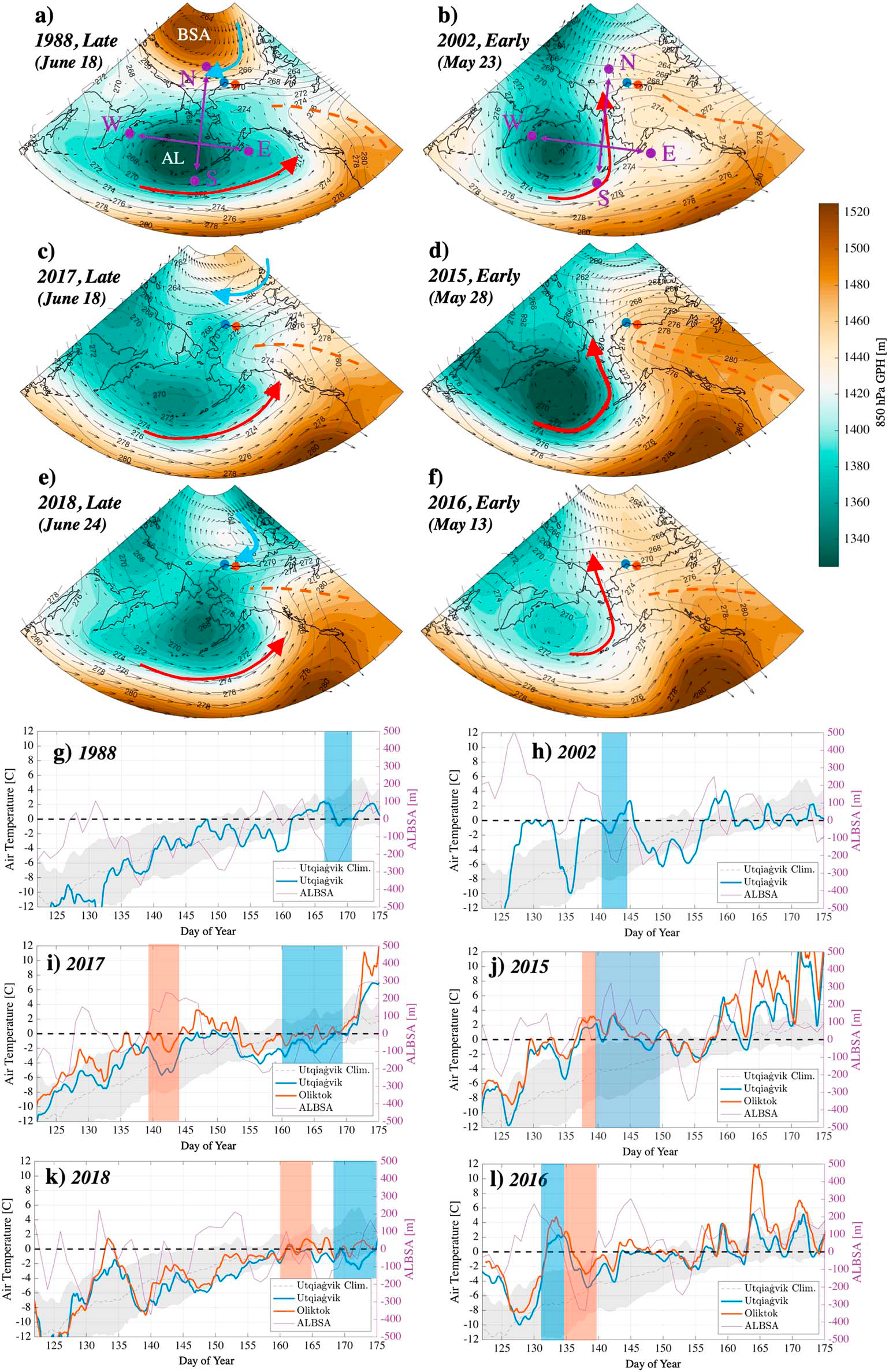The Aleutian Low-Beaufort Sea Anticyclone: A climate index correlation with the timing of springtime
Submitter:
Cox, Christopher James — NOAA Physical Sciences Laboratory
de Boer, Gijs — University of Colorado Boulder
Area of research:
Surface Properties
Journal Reference:
Science
A new metric is proposed, a climate index termed Aleutian Low-Beaufort Sea Anticyclone (ALBSA), which is suitable for monitoring and studying the predictability of the timing of springtime melt in the Alaskan Arctic.
Impact
Forecasts of the timing of melt onset over sea ice and snow melt over land with lead times of weeks to months are important for area stakeholders in the Alaskan region, including industry, environmental managers, and arctic communities.
Summary
Early and late extremes in timing of snowmelt have recently been observed in northern Alaska. We find that transport of air masses from the north Pacific influences the timing of melt on Alaska’s North Slope and the adjacent seas. Motivated by this finding, we developed a new index called the Aleutian Low – Beaufort Sea Anticyclone (ALBSA) as a metric sensitive to the regional atmospheric circulations responsible for the transport of the air masses. When ALBSA is positive, warm Pacific air is observed over the Bering Strait and in the far western arctic seas, and correspondingly the metric is correlated with the timing of spring melt. While individual weather events are ultimately responsible for melt, the index is sensitive to the position of the storm track, which varies more slowly than the weather events embedded within, potentially extending the lead time for advanced warning of the likelihood of early melt in the Alaskan Arctic region in spring.


